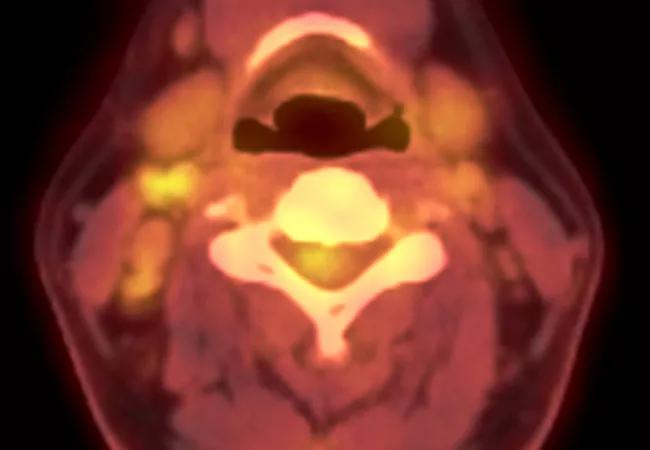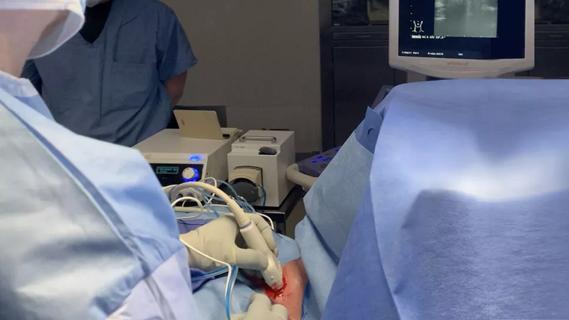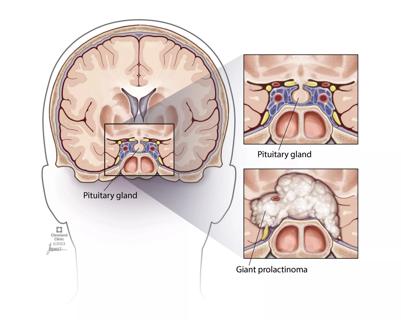While thyroid nodules carry a high malignancy rate, improved molecular markers can lessen the need for unnecessary surgeries

Written by Christian Nasr, MD
Cleveland Clinic is a non-profit academic medical center. Advertising on our site helps support our mission. We do not endorse non-Cleveland Clinic products or services. Policy
Thyroid nodules are common in adults and are detected in about 60% of imaging studies done for an unrelated reason. They create anxiety among patients because of the high risk of malignancy, which is estimated at 5-15%. Before 1976, physicians in the United States had limited options for patients with thyroid nodules because of the lack of diagnostic modalities that could determine the risk of malignancy prior to surgery. As a result, patients would end up having thyroid surgery, and enduring the morbidity risk that the procedure carries, for a nodule that was most likely benign.
In 1976, physicians in the United States began using fine needle aspiration (FNA) for the preoperative diagnosis of thyroid nodules. This method had been used successfully for a few years in Scandinavia. That practice significantly reduced the number of unnecessary surgeries, and FNA has become the standard-of-care in the management of thyroid nodules. To make the appropriate diagnosis, one needs access to an experienced thyroid cytologist since the recommendation to the patient depends on the diagnostic accuracy of the test.
The Bethesda System for Reporting Thyroid Cytopathology (TBSRTC) is a standardized stratification of thyroid cytology into six groups according to the risk of malignancy (ROM) from a large database. Even benign cytology (Bethesda I) carries a residual risk of malignancy (0-3%), which is why these patients still need to be monitored for enlargement. When the cytology is diagnostic of malignancy (Bethesda VI), the risk of malignancy is close to 100% which would require surgery. The surgeon would typically remove the lobe that contains the nodule, but the whole thyroid could also be removed depending on the patient and surgeon preference. With Bethesda I and VI, the decision is easy because the ROM is either so low or so high that the patient can be comfortable choosing between monitoring or proceeding to surgery.
The situation is less straightforward in the “indeterminate” category which includes Bethesda III, IV and V where the ROM is 10-30%, 25-40% and 50-75%, respectively. This is a major limitation of the cytology. Over the last two decades, several researchers have looked at molecular markers that could further assess ROM in indeterminate samples. One such method is Afirma® Gene Expression Classifier (GEC, Veracyte, South San Francisco, CA), which became available for clinicians in 2011. The Afirma® Gene Sequencing Classifier (GSC) followed in 2017.
Clinical researchers from Cleveland Clinic’s Endocrinology & Metabolism Institute and the Department of Pathology looked at their experience in the use of Afirma® GEC and GSC between 2011 and 2018. Their findings were published in the March 2020 issue of the Journal of Clinical Endocrinology and Metabolism.1 Among the 299 patients included in the study, the benign call rate for indeterminate nodules improved from 41% with GEC to 67.8% with GSC. Even in the “tricky” cases with Hürthle cell dominant cytology, the benign call rate improved from 22% with GEC to 63.2% with GSC. Classifying a nodule as benign reduces the need for surgery, which potentially reduces the associated morbidity of surgery.
Endocrinologists and endocrine surgeons at the Endocrinology & Metabolism Institute routinely collect Afirma® GEC and GSC samples when performing thyroid nodule FNA. These samples are sent to Veracyte only if the nodules are indeterminate, which eliminates the need to return for a repeat FNA.
With thyroid nodules being so common and thyroid cancer so rare, it would be ideal to have a test that would rule out cancer 100% when a benign diagnosis is reported or rule in cancer 100% when a malignant diagnosis is reported. Unfortunately, such a “perfect” test does not exist. Until that is available, physicians have to assess the risk by analyzing the patient’s history, sonographic findings, cytologic and molecular results to arrive at the best recommendation to manage these thyroid nodules.
References

Clinicians must navigate options as more patients qualify for CGM

Inpatient service can facilitate patient’s entry into the health system

Radiofrequency ablation significantly reduces symptom severity, shrinks nodules

Maternal-fetal medicine specialists, endocrinologists and educators team up

Giving young patients a hand as they take charge of their own health

Case illustrates how easily condition can mimic preeclampsia

Analysis examines surgical resection of rare pituitary tumors

Screening and medication key to better outcomes